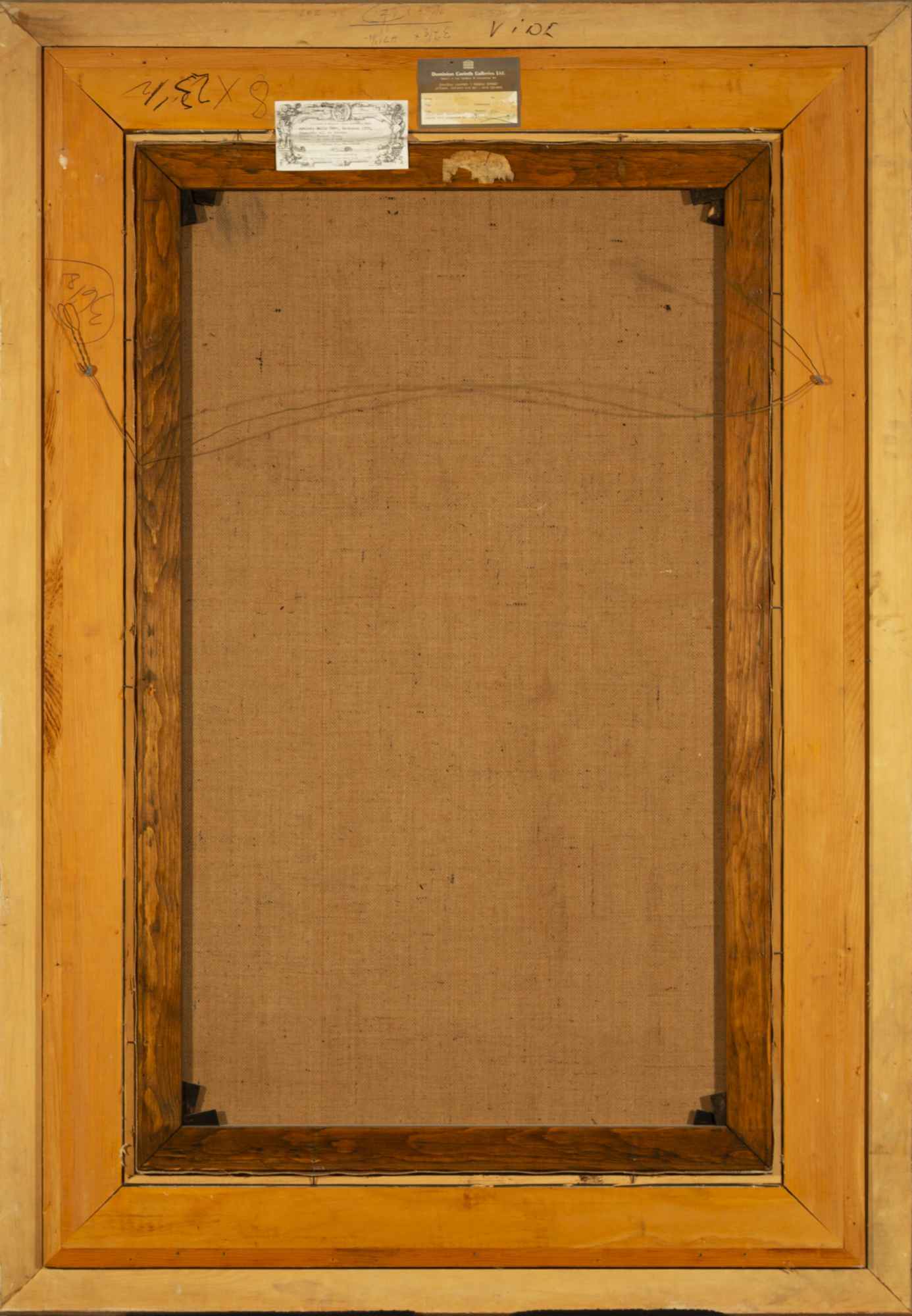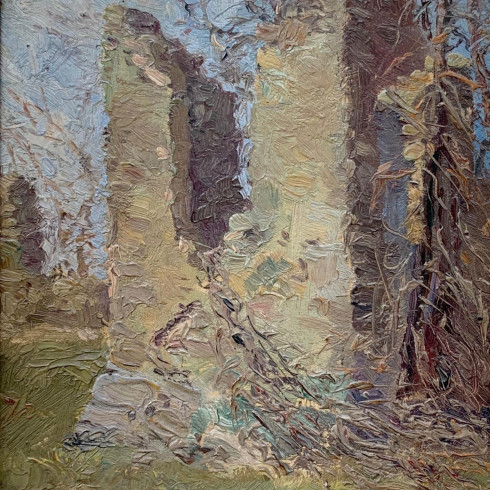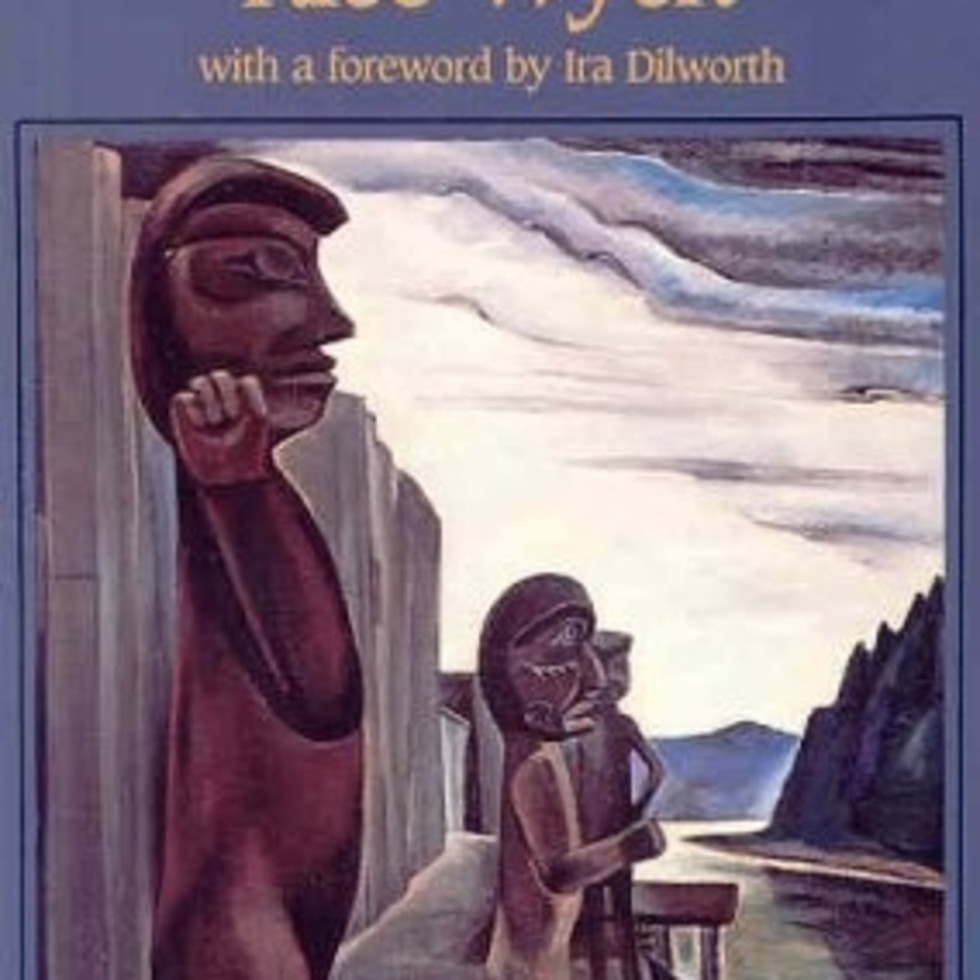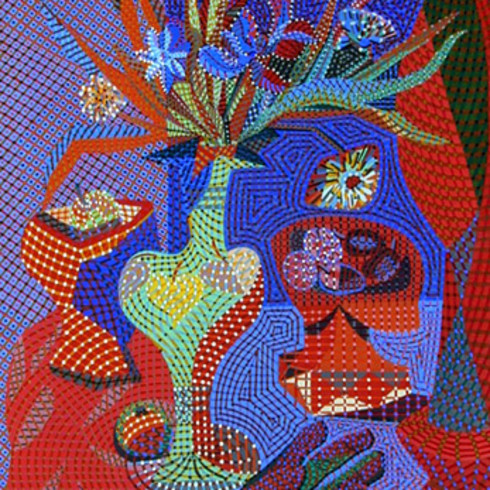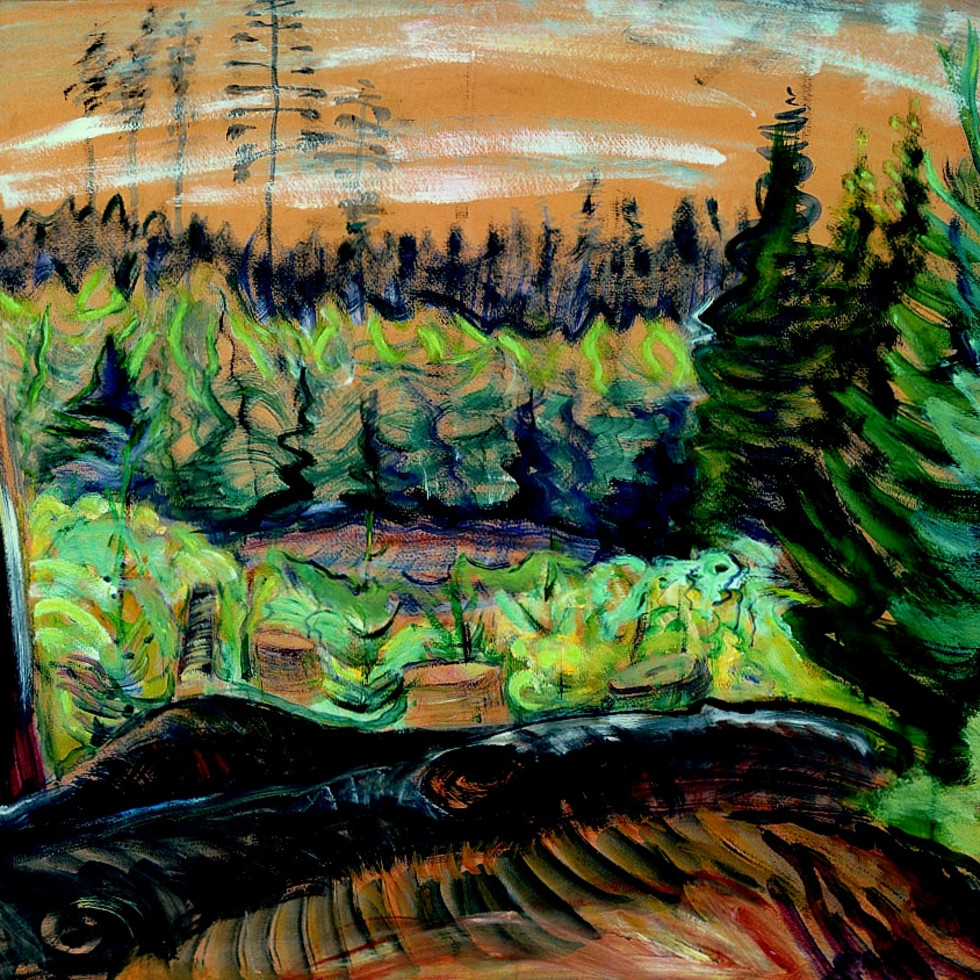Ventes notoires
Forest Trees, 1937-1939 (circa)
101.6 x 62.9 cm
Provenance
Irene Clarke, Toronto, circa 1942-1945.
Dominion Corinth Galleries Ltd., Ottawa, 1978.
The Collection of Mitzi and Mel Dobrin.
Expositions
Vancouver, Vancouver Art Gallery, Paintings by Emily Carr, 7-19 November 1939, no. 13 as Forest at $350.00 [?]Documentation
C. Clare Dimson, “Emily Carr, Canadian artist: She made it as a writer first,” Toronto Daily Star, 19 February 1972.
“Emily Carr Collection Goes on Sale,” Ottawa Journal, 7 September 1978.
Michael Carroll, “Art – Emily Carr at Dominion Corinth: a hint of greatness,” Ottawa Revue, 14-20 September 1978, p. 12.-Charles C. Hill
As Doris Shadbolt wrote in her 1990 book on Emily Carr, “In her drawings [of the early thirties, Carr] worked out ideas and nature themes that would appear in her work from now on: the tree as a stable vertical around which whorls of branches circle upwards …; the whirling spiral of a young evergreen; the naked tree bole; the writhing stump; the living wall of jungle and the opening into the woods. Now everything must be alive, nothing static. The animating principle is movement.” On 14 September 1937 Carr wrote, “I am working on two woods canvases. One shows a small pine in undulating growth and the other is a tall shivery canvas. I began them with huge brush strokes, first going for the movement and direction such as I got in my sketches and with great freedom.” And on 28 November, “Three new pictures are on the way, an immense wood, a wood edge, and a woods movement. These woods movements should be stupendous, the inner burstings of growth showing through the skin of things, throbbing and throbbing to burst their way out.” In Forest Trees, young pines frame the lighted clearing. From there the eye moves up to the more mature trees, the living wall of jungle that frames the opening and mysterious light at the top. The fluid parallel brush strokes, conical or rounded, animate nature, rocking with the same dynamic, energy seen in her impressive canvas Roots of 1937-1939 in the Royal British Columbia Museum.
Carr’s art had come full circle. In 1909 she had painted landscapes of dark paths between massive firs in Stanley Park but now nature has been animated, the dimly lit paths leading through throbbing woods towards a mysterious light. In her canvases of the early thirties Carr had frequently juxtaposed new and old growth, but now both young and old swing with the same movement leading to something unnamed.
In the summer of 1934 Emily Carr took a summer course in short story writing. She suffered her first heart attack in 1937 and to conserve her energy she now concentrated on her writing as a break from painting. After many rejections, Carr’s future literary executor Ira Dilworth convinced the Canadian division of Oxford University Press, run by Clarke-Irwin & Company of Toronto, to publish Carr’s first book, Klee Wyck, in 1941. Klee Wyck won the Governor-General’s prize for non-fiction for 1941 and her publisher William H. Clarke and his wife Irene Clarke formed a close relationship with Carr publishing all her subsequent titles. As much an admirer of Carr’s painting as her writings, Irene Clarke eventually acquired over fourteen paintings by Carr, including Forest Trees.
Charles C. Hill




